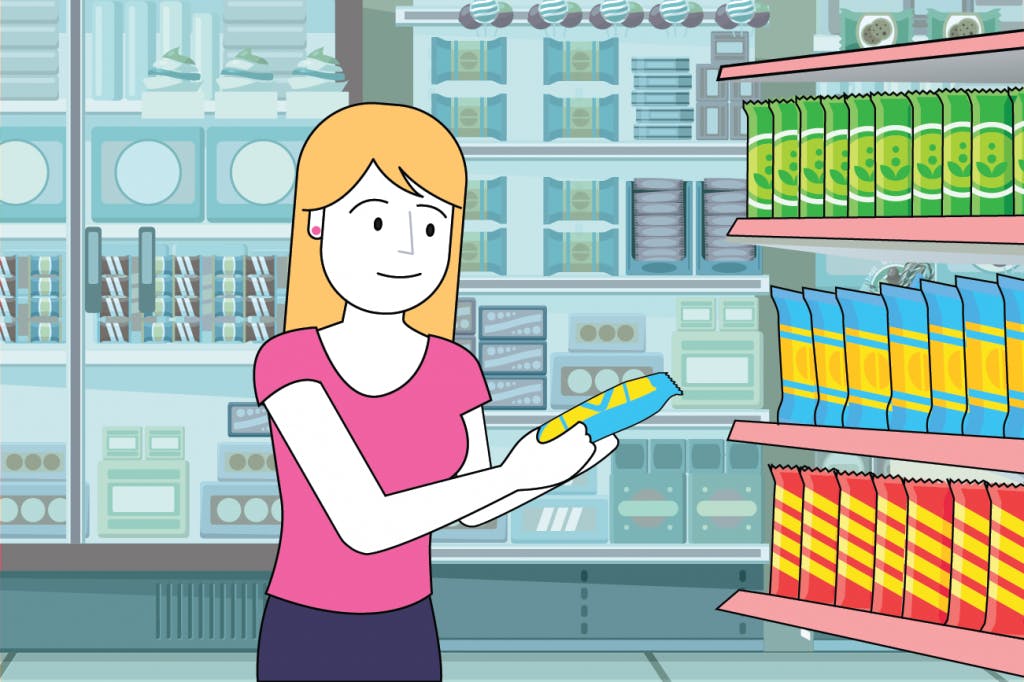I recently read an interview with Dan Michael, who was the director of R&D at Mars—you know, Mars of Snickers and M&M candy fame. In the interview, Michaels comments that during his tenure at Mars, they weren’t really focused on creating new candy, but rather on creating new flavors—essentially, brand extensions.
“Our main focus is less bringing a new candy into the market, but creating news and interest around the ones we have,” Michael says in the interview. “You’ve probably seen that we release new M&M flavors. Sometimes we put it up to a consumer vote. That’s what we do more than coming up with a brand-new candy bar.”
And being that M&Ms, for example, is probably one of the most recognized candies on the planet, the strategy is a sound one.
But still. I take issue with this, as well as a few other things he says in the article. Three issues, to be exact.
Issue 1: Michael notes later in the article that the failure rate of new products can range anywhere from 70 to 80 percent. It’s one of the reasons they don’t often try to reinvent the candy-wheel, and why the aforementioned brand extensions work well. It’s a significant percentage, let’s be real.
But it also leaves room for success.
It’s in that 20 percent margin that new products can shine, particularly when you have a staid category like candy bars, where there is little movement. (Michael notes that the top 10 candy bars rarely change.) I’m not telling confectioners with new products not to shoot for the stars, but if your goal is not to be a top 10 candy bar, but instead be a really good, high quality candy bar, there’s certainly room for you on the shelf. Don’t let a high failure rate deter you from trying to get your candy into the hands of consumers.
What’s more, new products are an opportunity to stand out in a muddled candy aisle, according to Mars own research. According to insights from Mars Wrigley Confectionary U.S. released in 2018, their research confirmed that “once shoppers are in the candy aisle, they think its disorganized, hard to shop, and underwhelming,” notes Tiffany Menyhart, Vice President of U.S. Category Leadership for the company.
Issue 2: Michael gives an anecdote of building a factory to produce Snickers in Russia in the 1990s, and the goal was to create a Snickers exactly like the one in the US. “We feel strongly that our brands as they are have a lot of legs no matter where they are,” he states. “It’s one recipe; you don’t have to redevelop stuff.”
I’ll agree that that is a solid point.
But if you don’t at least review what you have, you lose out on an opportunity for a potential new discovery.
No one is saying the recipe that makes Snickers so delightful should change. (Least of all me. A frozen Snickers bar—not the ice cream, but actually sticking the candy bar in the freezer—is one of my greatest joys). But what I, personally, am saying, is that it can’t hurt to tinker with it every once in awhile. Technologies expand, ingredients are developed—it’s entirely possible that a new Snickers (or whatever your candy of choice is) would play better than the original. Granted, the opposite is true as well. Or a third option could come into being—out of tinkering with one recipe, a recipe for a whole new product is discovered.
Or perhaps it isn’t the recipe, but the way the product is presented. Review what you have in terms of packaging and sizes on offer, and see where you might be able to make a change that is more attractive to consumers. In the research mentioned above, the company found that M&M standup pouch sales had gone up almost 40 percent, and consumers who bought those pouches spent 3 percent more per trip. Standup pouches surely weren’t an original M&M packaging idea, but as consumer demand changed, they rolled with it—packaging-wise—and it paid off for them.
Issue 3: Michael notes in the interview that they created a space that would inspire new product development and foster new ideas.
But what happened to my invitation?
I kid, I kid. Obviously, there’s not really anything I can take umbrage with—having a dedicated space to retreat to and brainstorm new ideas, play around with new recipes, and invite people in to taste test is what every CPG company should have. In fact, if you don’t have such a space in your own company, you should. It’s a sign that you’re committed not only to your product and brand, but also to your consumers—this creation space, after all, is all about developing those new products they want.
Developing new products is no easy job, but the excitement and satisfaction of creating a successful product is a glory all its own. Develop, redevelop, and never stop learning about your products—words to live by in the ever-changing world of CPG.


